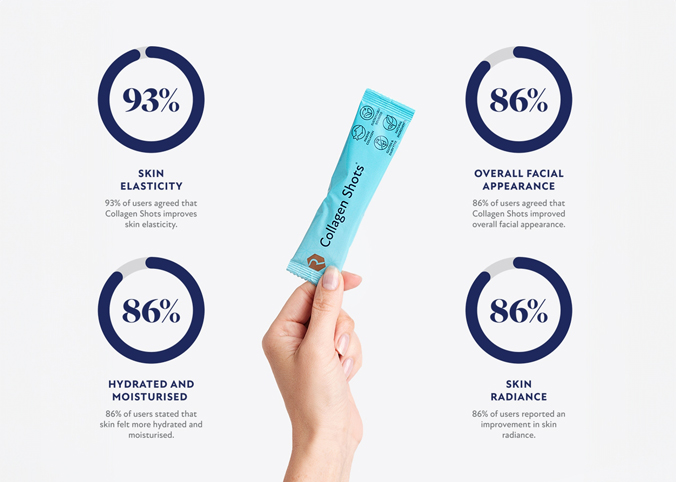What Type Of Hair Do I Have?

Curly, wavy, straight, kinky, frizzy, voluminous… there are plenty of hair types and states your hair can be in. Knowing and understanding your hair type is crucial as it will influence the kind of products that you should be using on your hair, the best ways to style it and much more.
However, finding out what hair type you have is easier said than done. This is because your hair type is influenced by four overarching characteristics, namely, your hair porosity, texture, structure and scalp moisture.
In this blog, we explain what these characteristics mean and how you can determine what type of hair you have.
Hair Structure
Hair structure refers to the thickness of your hair strands. There are three categories of structure that increase in thickness, thin, medium and course. Hair structure plays an important role in how your hair reacts to certain products and how well it is able to hold different hairstyles (often, the thicker, the better).
Hair Texture
Your hair texture is the natural shape or patterns your hair makes when it dries. There are four types of hair texture, straight, wavy, curly and kinky, each of which has distinct subcategories too. The best way to determine what your hair texture is is to wash it and leave it to dry naturally and see what shape your hair strands form.
Straight Hair
Straight, or Type 1 hair, is completely straight but can vary in thickness or structure. As mentioned above, you can have thin, medium and coarse hair thickness. Type 1A would be straight, thin hair, which is very fine to the touch. Type 1B is medium and straight, which means it will be slightly more voluminous than 1A. Lastly, type 1C is coarse and straight, which tends to be very thick and easy to style.
Wavy Hair
Also known as Type 2 hair, wavy hair is typically straight at the roots and has a slight ‘S’ shape towards the ends. As with straight hair, there are three subcategories that refer to the structure of the hair.
Type 2A hair is fine and easy to style; however, it can lack volume, which is why using a quality volume-boosting hair product is recommended. Type 2B is slightly thicker but can get frizzy at times. Lastly, type 2C hair will be wavy from the root and have a noticeable ‘S’ shape. In humid weather, this wavy hair often becomes frizzy; however, with a lightweight mousse, you should be able to tame it.
Curly Hair
Curly hair has a spirally to corkscrew shape. This type 3 hair has natural volume, making it great for styling; however, it is prone to frizziness. As with the previous hair types, there are the A, B and C subcategories.
Type 3A has a very clearly defined ‘S’ shape which creates loose curls. With this hair type, you should avoid hairstyles that pull on the scalp as well as those that could damage the definition of the curls.
Type 3B hair slightly creates tighter curls. It’s also slightly thicker, contributing to good volume. It’s important to prioritise hydration and shampoos that are free from sulphates and silicone.
Lastly, type 3C is the springiest of the three curly hairs. As with 3B, it’s prone to frizziness and dehydration, which is, again, why hydration should be prioritised.
Kinky Hair
The final type of hair structure is coily or kinky hair (type 4). This structure creates very tight curls that contribute to high volume. This hair type is even more prone to frizziness and dryness, which is why you should choose products that nourish your hair.
Type 4A is characterised by tight, springy curls. People with this hair should avoid styling with heat and prioritise hydration. Type 4B hair tends to be less defined; however, the use of curling creams can assist with this. Lastly, type 4C hair is very curly and tends to shrink when it dries after a wash. 4C hair is very delicate, which is why it should be treated with care as well as plenty of moisture.
Hair Porosity
This refers to how well your hair absorbs moisture and products. This is important to know as it will influence the types of products you should use on your hair. The more porous it is, the better it absorbs moisture.
Hair with high porosity will absorb and release moisture rapidly, which causes it to become dry and brittle. To alleviate this, use hydration supplements as well as nourishing masks, and leave-in treatments.
Low-porosity hair will not absorb moisture easily, which generally leads to product buildup. To combat this, apply products to the hair when it is damp.
Determining the porosity of your hair is a simple task. Simply take a strand of hair and place it in a bowl of water. If it floats, then it has low porosity. If it sinks to the bottom, it has high porosity. If your hair is well-balanced, you will see the strand floating in between the water’s surface and the bottom of the bowl.
Scalp Moisture
Caring for your scalp is vital and contributes to healthy, gorgeous locks. There are three types: dry, balanced and oily. Generally, the more you need to wash your hair, the oilier it is. Remember that the scalp naturally produces oil – a little is okay, but too much can make your hair very greasy.
Determine Your Hair Type
Your hair type is determined by several factors, the hair porosity, structure, texture and scalp moisture. Now that you understand how to determine your hair type, you can choose the right products that will nourish your hair and keep it happy and healthy.






